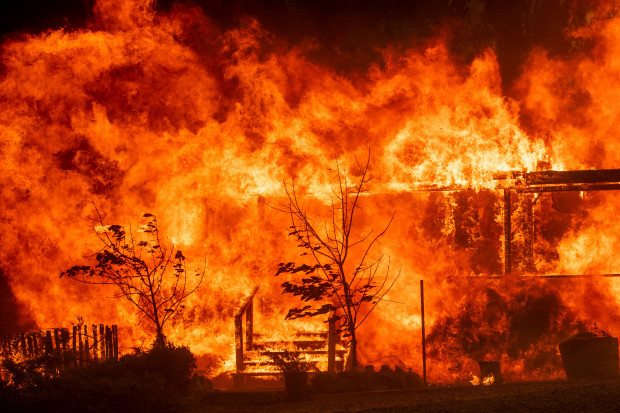California is still burning.
Since the start of 2020, as of October 8, the wildfires in California have decimated more than 4 million acres of land. 31 people have been listed as fatalities, and over 9,200 structures, including residences and historical sites, have been destroyed. Devastating damage has been inflicted on local animal life and their habitats. More than 15,000 firefighters are working to contain the 22 major wildfires in the region, as well as extinguishing newer fires as they appear.
California normally suffers from an annual dry season thanks to a lack of moisture during the warmer months; vegetation dries out and subsequently becomes kindling that can be easily set ablaze by a single spark. As the years have progressed, a combination of increasingly high temperatures, worsening greenhouse gas emissions, and strong winds of dry air intensified by climate change have contributed significantly to the risk of an uncontrollable wildfire. According to the Insurance Information Institute, as many as 90% of wildfires in the United States are caused by people. Nina S. Oakley, a research scientist at the Center for Western Weather and Water Extremes at the University of California, noted retrospectively that “you also have the human contribution to wildfire… [these factors create] a situation favorable to wildfire.” A recent example occurred when a couple became infamous after setting off fireworks in a field of dry grass, which then ignited and wiped out thousands of acres just east of Los Angeles. Other incidents, such as the Carr Fire in 2018 and the many fires caused by downed power lines, also stand as proof of her statement.
The catastrophic aftermath to contemporary Western United States fires can be partially attributed to the country’s historic tactics of suppressing wildfires. Park Williams, a bioclimatologist at Columbia University, said that, “For the last century we fought fire, and we did pretty well at it across all of the Western United States. And every time we fought a fire successfully, that means that a bunch of stuff that would have burned, didn’t burn. And so over the last hundred years we’ve had an accumulation of plants in a lot of areas.” In other words, the preservation of plant life then leads to bigger flames now. The United States Forest Service, despite California’s ban on controlled burns some decades prior, now utilizes that method to hopefully lessen the damage caused by regional wildfires.
As winter approaches, cooler temperatures, light rain, and overall changes in weather patterns are anticipated, ideally weakening the fires and allowing for their proper extinguishment. Many fires have already been successfully contained, and many more are on their way towards that status. However, without anything done to stop American climate change, California will continue to war with their own land.



